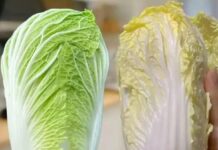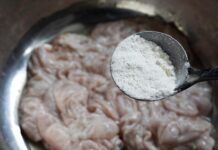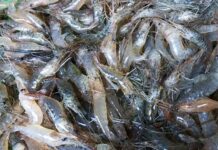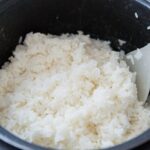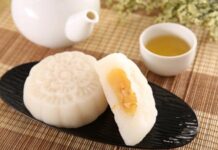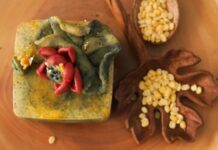Pigs’ Small Intestines: The Controversial Delicacy
Recently, social media has been abuzz with debates surrounding a particular pork delicacy: pigs’ small intestines, known as “lòng se điếu” in Vietnamese. This offal has sparked controversy due to its high price, ranging from VND 1.5-2.5 million per kilogram, sometimes even reaching VND 4 million per kilogram.
The disputes center around the origin, price, and rarity of this particular dish.
Some claim that “lòng se điếu” is a rare variation of the pig’s small intestine, called “phèo hai da” in Vietnamese. It is so uncommon that sellers often keep it for themselves. One person even asserted that only one in a few thousand pigs might have this variation. They further claimed that it is possible to transform regular small intestines into “phèo hai da” by soaking them in contracting chemicals such as “phền chua,” mucous membrane contracting agents, or strong cleaning agents like high-concentration hydrogen peroxide (H2O2), diluted formalin, or sodium sulfite – a protein denaturing agent. Afterward, the intestines are gently twisted and curled to stick the two mucous membrane layers together, creating the distinctive appearance of “lòng se điếu.”
However, these claims about transforming regular pig intestines into the expensive “lòng se điếu” remain speculative, lacking concrete evidence to support the existence of such processing technology for this special delicacy.

What Do Experts Have to Say About “Lòng Se Điếu”?
According to Professor Dr. Nguyen Duy Thinh, from the Institute of Biotechnology and Food Technology at Hanoi University of Science and Technology, not all pigs have “lòng se điếu.” Only some male pigs in their developmental stage possess this particular type of intestine. It is a unique part of the small intestine with a white powdery substance inside.
In the culinary world, “lòng se điếu” is considered the tastiest among all pork offal. It has a crunchy texture and a nutty flavor. The most distinctive and delicious part of the small intestine is located near the stomach, at the beginning of the small intestine.
“Lòng se điếu” is only found in male pigs, and not all of them have it, making it a rare delicacy that cannot be acquired solely with money.
Food Safety Concerns Related to “Lòng Se Điếu”
“Lòng se điếu,” as part of the small intestine, is the first segment of the pig’s digestive system. According to Professor Dr. Thinh, this part has a lower risk of parasitic infection. If present, most parasites would be found in the second segment of the small intestine. From there, they may move to the large intestine and eventually exit the body through waste.
Although the risk of parasitic infection is lower, it is crucial to ensure that all pork offal, including “lòng se điếu,” are thoroughly cooked before consumption.
“Lòng se điếu,” like all other parts of the small intestine and pork offal, carries a risk of harmful parasitic infection due to pigs being omnivores.
It is advisable to purchase pork offal only from reputable shops. When buying pig intestines, look for ones with a pinkish-white hue, a smooth and glossy surface, a rounded shape, and no strange odors.
Just like any other type of offal or pork internal organ, excessive consumption of “lòng se điếu” is not recommended for a healthy diet. Proper handling and thorough cooking are essential when preparing this delicacy.
Be Wary: 3 Cheap Veggies You Should Never Buy, For Your Own Good!
“Health experts issue a warning about three seemingly harmless and affordable vegetables that are widely available but could pose potential health risks. These vegetables, despite their prevalence, should be avoided to protect your well-being and ensure you don’t end up paying a hefty price for your health.”
6 Cooking Habits That Are Ruining Your Meals and Your Health: Bad for Your Heart and Waistline. #3 Will Surprise You!
“Unhealthy cooking habits can take away the joy of relishing delicious meals and impact your family’s health. It’s time to revamp your culinary routines and embrace a healthier approach to cooking. Say goodbye to these common mistakes and watch your dishes transform into mouth-watering, nutritious delights that everyone will love.”
The Unassuming Culprits: 4 Everyday Items That May Be Harming Your Family’s Health
The kitchen is often the heart of a home, but it can also be a hotbed of hidden health hazards. While they may seem harmless, everyday kitchen items can pose serious risks to your well-being if used long-term. Experts are now warning about four common items in particular that could be detrimental to your health, urging homeowners to remove them from their kitchens immediately to avoid potential illnesses.












